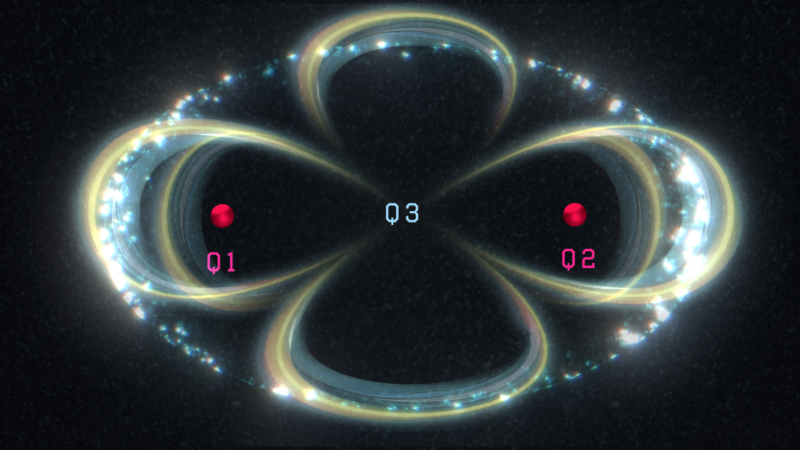Silicon-based qubits take a big leap forward

Enlarge / A representation of the two phosphorus nuclei (Q1 and Q2) with the electron (Q3) that helps mediate their interactions. (credit: Tony Melov / UNSW)
Over the last few years, the big question in quantum computing has shifted from "can we get this to work?" to "can we get this to scale?" It's no longer news when an algorithm is run on a small quantum computer-we've done that with a number of different technologies. The big question now: When can we run a useful problem on quantum hardware that clearly outperforms a traditional computer?
For that, we still need more qubits. And to consistently outperform classical computers on complicated problems, we'll need enough qubits to do error correction. That means thousands of qubits. So while there's currently a clear technology leader in qubit count (superconducting qubits called transmons), there's still a chance that some other technology will end up scaling better.
That possibility is what makes several results being published today interesting. While there are differences among the three results being announced, they all have one thing in common: high-quality qubits produced in silicon. After all, if there's anything we know how to scale, it's silicon-based technologies.
Read 16 remaining paragraphs | Comments